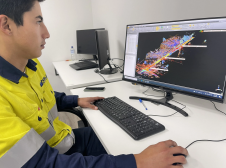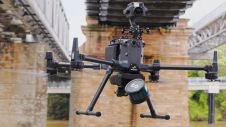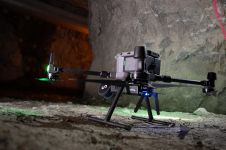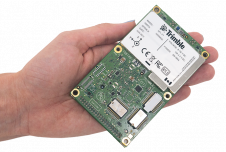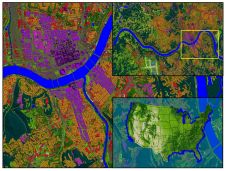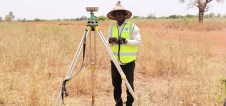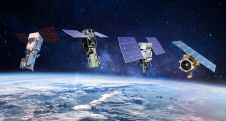Preferred Backgrounds: Engineering and Geography
Developments in Geomatics Education (4)
In the March issue of GIM International we started a series on Developments in Geomatics Education, to be continued over forthcoming issues. One interesting topic here is the background of people working in organisations using Geo-Information Technology (GIT) as their primary tool to support and streamline company business processes. GITA recently released a report that provides a wealth of interesting and insightful statistics; hereunder some further analysis and discussion.
The Geospatial Information & Technology Association (GITA), a not-for-profit organisation, based in Aurora, USA, has published the annual Geospatial Technology Report for eight years now (see textbox). The new report for 2006 provides an extensive survey of characteristics belonging to the wide variety of Geo-Information Technology (GIT) users and gives detailed information on public and private-sector organisations which need GIT to run and manage their facilities and business process. In particular, the following six sectors are surveyed: (1) electricity utility industry, (2) gas utility industry, (3) pipeline industry, (4) public sector, (5) telecommunications industry and (6) water, wastewater, and storm-water industry. Although carried out by an US-based organisation, the survey is not restricted to the Northern Americas. Yet the contributions from other continents are not equally distributed over the above six sectors.
Workforce Issues
For the first time, this 2006 survey also collected data on the background of employees, including number actively engaged in the use of GIT, their educational background and area of expertise. This new part of the survey was carried out as an outgrowth of GITA’s recent US Department of Labor grant to study geo-information technology as a high-growth industry. The figures provided should at times be interpreted with some caution insofar that some employees qualified in the survey as GIT users may use GIT only during very limited periods of their labour time, even as little as 1%, while others use it for as much as 100%. Gross average use for all six sectors lies in the range of 30% of labour time.
GIT Ranking
The primary business drive behind implementing geo-information technology in any of the above sectors is automation of the many activities concerning design, construction, operation and maintenance of facilities. Table 1 gives ranking per sector for the use of the diverse categories of geo-information technology: CAD, Enterprise Applications, GIS, Information Technology, Mapping & Cartography, Remote Sensing, Surveying & GPS and 3D Imaging and other visualisation tools. GIS leads in all sectors, while Surveying & GPS several times closes or nearly closes the ranks. Remote Sensing, including photogrammetry, enjoys high and medium ranking in the telecommunications and water sectors, where, on the other hand, CAD receives below-medium ranking. Mapping & Cartography for all sectors fall into the medium ranking range. Representation of the world in its full three dimensions receives high ranking (three out of eight) only in the telecommunications sector.
Sector Characteristics
八十六家公司提供电力d188asia备用网址istribution services contributed to the survey. They are based in the US and Canada, with international representation from Australia, Brazil, Israel, New Zealand, Portugal, South Africa and Venezuela. The contributing organisations from the electricity sector employ in total 13,724 people engaged in GIT. Average GIT use by these employees in terms of labour time is 28%. The gas utility industry comprises companies providing gas distribution services, some of which may also own and manage high-pressure transmission lines. Companies who only transmit gas are included in the pipeline industry segment. Twenty-three companies responded. The pipeline industry involves companies concerned with the transmission of natural gas, crude oil, or other products via pipelines. In the eighteen respondent companies from the Northern Americas, with additional participation from Korea, 1,762 employees are actively engaged in GIT use. Participants from the public sector include cities (45%), counties (26%), states (11%), federal governments (10%) and other public-sector government (14%) around the world, including Australia, Brazil, Canada, India, Italy, Sweden, the United Arab Emirates and the United States of America. The 208 respondents from the public sector employ in total 17,451 GIT users. Average GIT use in the public sector in terms of labour time is 24%. The public sector ranks among the most mature users of GIT: nearly 17% initiated GIS efforts in the 1980s, some even earlier, 62% in the 1990s and 21% after 2000. The telecommunications industry consists of companies providing telephone, cable television and related telecommunications ser–vices. In total, fifteen companies from Brazil, Canada, Hungary, India and the US participated, including traditional telephone companies, wireless companies, providers of broadband fibre-optic services, and providers of virtual private networks. The size of companies ranged from thirty employees to six thousand, providing a total of 8,858 employees employed by contributing organisations from the telecommunications sector, where the average GIT use in terms of labour time is, at 32%, the highest of all sectors. The water, wastewater, and storm-water industry is concerned with the distribution of potable water and/or the gathering/collection/treatment of wastewater and storm-water. In total, 37 utilities from Australia, the Bahamas, Canada, Sweden, Syria, Turkey and the US participated in the survey. The number of their customers ranges from as few as four to as many as 8.3 million. The number of employees actively engaged in GIT range across the diverse companies from two to five hundred, providing a total of 940 employees. Average GIT use of these employees in terms of labour time in the water sector is 19%.
Educational Background
表2总结了教育水平的GITployees, arranged per sector. Levels are subdivided into four categories: high-school only, two-year college, four-year college and graduate degree. In the GITA survey used to compile Table 2 and Table 3, the figures characterising the pipeline sector and the public sector are, respectively, exactly, and nearly identical. This may be a coincidence, but the possibility of a lapse should not be excluded. However, any deviations will not affect our major conclusions. Note that the percentages in Table 3 do not, as might be expected, add up to 100% along the columns. This is because the categories representing educational background are not mutually exclusive; they may overlap or one category may form a subset of another. For example, with a background in engineering the employee may be trained as a photogrammetrist or as a computer scientist, or both. An employee with a geography background may have specialised in GIS or cartography during his studies, while others may have entered environmental science from a background in geography.
Discussion
The tables show that the most common educational level for a GIT employee is a four-year college degree and the most rele–vant academic backgrounds are GIS and engineering (Table 3). The electricity and gas sectors are somewhat biased from this general picture in the direction of employees with only high-school education. Telecommunications employees are biased in the direction of being higher educated, nearly a quarter having a graduate degree, a bias which results primarily from respondents outside the Northern Americas. In none of the sectors is a background in surveying heavily in demand. In contrast, a background in photo–grammetry is well in demand in the telecommunications sector. An educational background in engineering provides good career perspectives in all six sectors; in five of the six sectors over half of GIT employees are engineers by training. Table 3 indicates also that a background in GIS seems to be obtained as secondary training on top of other education, for example a geographer who has carried out mandatory college research on census using as tool a licensed commercial GIS package.
Concluding Remarks
Assuming backgrounds in geo–graphy and engineering are mutually exclusive, we may observe that the percentage of GIT employees with a background in either engineering or geography add up to 91% in the electricity sector, 84% in the gas utility sector, 60% in the telecomunnications sector, 97% in the water sector and to the full 100% in the pipeline and the public sector. Engineering and geography are thus favourable backgrounds for starting a career in sectors where geo-information technology plays an important role in running and managing business processes, especially when the study is enhanced with a thick layer of creamy knowledge of GIS principles and training in GIS skills.
Textbox:
GITA was founded in 1978 as AM/FM International (Automated Mapping/Facilities Management). In 1998 the name was changed to Geospatial Information & Technology Association (GITA), the mission of which is to provide excellence in education and information exchange on the use and benefits of geospatial information and technology in business, utility and government applications worldwide. The 2006 Geospatial Technology Report: a Survey of Organizations Implementing Geospatial Information Technologies, to which report the present article owes its figures, can be ordered now at US$299 for GITA members and US$449 for non-members, email: info@gita.org,
website:www.gita.org.
Make your inbox more interesting.Add some geo.
了解新闻、发展和技术al advancement in the geomatics industry.
Sign up for free





